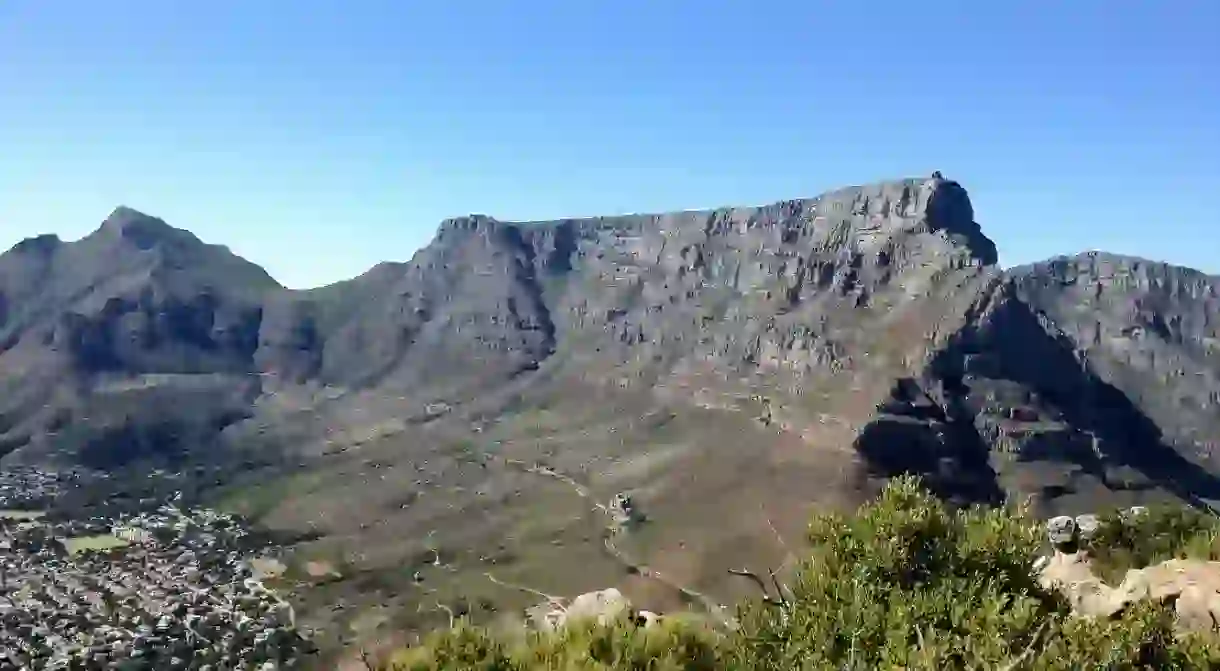A Local's Guide to Table Mountain

Table Mountain is the most well-known landmark in Cape Town, providing a spectacular backdrop to the sprawling city. With a state-of-the-art cableway and over 300 hiking routes that lead to the summit, the majestic mountain provides nature lovers and outdoor enthusiasts with endless enjoyment year-round. Here, a friendly guide to Hoerikwagga (Mountain in the Sea).
The advantage to hiking up Table Mountain is that if your legs are weary after the hike, you can simply take a cable car down the mountain. One-way tickets can be purchased at the Upper Cableway Station for R125 per person. Do take heed of the weather conditions, though, as the Cableway Station closes in strong winds or bad weather, which may leave you stranded at the top (check the Cableway website for weather information).

The Cableway operates from 8:30am until 5:30pm in winter and closes later in summer, when the sun sets around 8pm. If you’re going by car, arrive early in the morning to avoid long queues and a shortage of parking.
Table Mountain’s diverse hiking routes vary in length, nature, and difficulty, but each one guarantees magnificent views of the Cape Peninsula and the city. The easiest trails lead directly to the summit while the hardest routes traverse bushy and broken terrain and involve lots of scrambling and exposure to heights.

Novice hikers should try Platteklip Gorge, the easiest and oldest route to the summit, and the one taken by António de Saldanha in 1503. The clear, sign-posted route begins a few meters to the right of the lower cableway station and is accessible from Tafelberg Road.
Since Platteklip Gorge is the most direct route to the top, it is also the most popular, so expect some traffic along the way. The path is steep and constructed of stone steps that lead hikers through a ravine on the city-facing side of the mountain. Depending on your fitness level, the three- kilometer trail can be completed in two to three hours. Camera-wielding hikers are treated to dramatic rock formations, fragrant fynbos, and fauna such as the friendly rock dassies (hyrax).
If you have more time, traverse the length of the table top to Maclears Beacon — the highest point of Table Mountain, at 1,086 meters. This additional 1.5-hour walk affords magnificent views and is well worth the effort.



The more adventurous hiker may opt for Skeleton Gorge, one of the main routes to the summit. Skeleton Gorge begins at the Kirstenbosch Botanical Garden and is a strenuous hike covering 6.2 kilometers (3.8 miles). The path follows a ravine covered in lush Afromontane forest before it arrives at Smuts Track, a steep laddered ascent leading to the top of the gorge. From there, hikers traverse the eastern flank of the mountain to reach Maclears Beacon. The entire route takes three to five hours to complete, with a total elevation of 930 meters (3.100 feet).


The best time to hike Table Mountain is early in the morning, which allows enough time for the return trip. Be prepared for all weather conditions, as the weather changes rapidly in Cape Town. The temperature on the mountain is a few degrees cooler than the city, so be sure to take warm clothing. Carry plenty of water, especially in summer (November to March) and waterproof clothing in winter (May to August). Never hike alone, and avoid the mountain after heavy rains, as the paths will be slippery.













